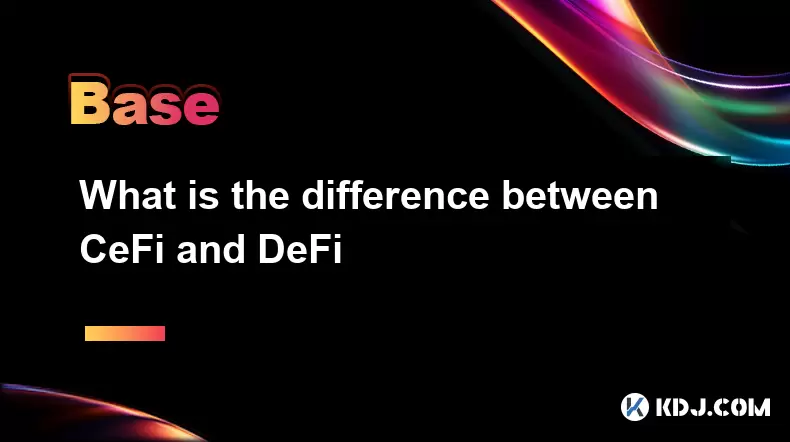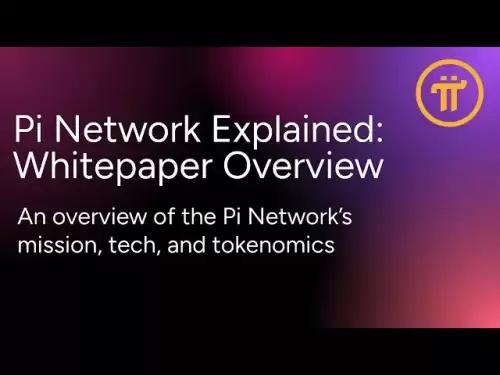-
 Bitcoin
Bitcoin $121,713.8152
3.06% -
 Ethereum
Ethereum $3,041.6437
2.42% -
 XRP
XRP $2.9499
5.12% -
 Tether USDt
Tether USDt $1.0000
-0.02% -
 BNB
BNB $704.1034
1.75% -
 Solana
Solana $166.7523
2.91% -
 USDC
USDC $0.9999
0.00% -
 Dogecoin
Dogecoin $0.2052
2.90% -
 TRON
TRON $0.3011
-0.47% -
 Cardano
Cardano $0.7461
1.42% -
 Hyperliquid
Hyperliquid $48.3650
1.12% -
 Stellar
Stellar $0.4548
3.52% -
 Sui
Sui $3.9527
14.50% -
 Chainlink
Chainlink $16.3300
5.87% -
 Bitcoin Cash
Bitcoin Cash $511.8016
1.25% -
 Hedera
Hedera $0.2395
1.40% -
 Avalanche
Avalanche $21.6526
2.06% -
 UNUS SED LEO
UNUS SED LEO $9.0073
-0.23% -
 Shiba Inu
Shiba Inu $0.0...01369
2.61% -
 Toncoin
Toncoin $3.0335
0.66% -
 Litecoin
Litecoin $96.6206
1.72% -
 Monero
Monero $355.1673
5.35% -
 Polkadot
Polkadot $4.0839
2.47% -
 Uniswap
Uniswap $9.3282
9.72% -
 Dai
Dai $0.9997
-0.01% -
 Ethena USDe
Ethena USDe $1.0004
-0.04% -
 Pepe
Pepe $0.0...01248
1.07% -
 Bitget Token
Bitget Token $4.4642
2.68% -
 Aave
Aave $325.0626
6.81% -
 Bittensor
Bittensor $418.1482
6.22%
What is the difference between CeFi and DeFi
CeFi offers user-friendly, regulated crypto services through centralized intermediaries, while DeFi provides decentralized, non-custodial financial tools via smart contracts, giving users full control but requiring more technical knowledge.
Jul 15, 2025 at 06:36 am

Understanding the Concept of CeFi
CeFi, or Centralized Finance, refers to financial services in the cryptocurrency space that are controlled and operated by centralized entities. These platforms function similarly to traditional banks, where a single organization manages user funds, executes trades, and ensures compliance with regulatory frameworks.
Users interact with CeFi platforms through intermediaries, such as exchanges or lending services, which maintain control over private keys and transaction processes. This setup often provides a more familiar and streamlined experience for newcomers to the crypto ecosystem, offering customer support, insurance options, and fiat-to-crypto on-ramps.
Key features of CeFi include:
- Centralized control of assets
- Custodial wallet systems
- Regulatory compliance and KYC procedures
- High liquidity and ease of use
Exploring the Nature of DeFi
DeFi, short for Decentralized Finance, represents a movement toward open-source, permissionless, and decentralized financial protocols built primarily on blockchain networks like Ethereum. Unlike CeFi, DeFi eliminates the need for intermediaries by allowing users to interact directly with smart contracts.
In DeFi ecosystems, users retain full control over their private keys and can engage in various financial activities—such as borrowing, lending, staking, and trading—without relying on a central authority. These platforms operate autonomously based on pre-defined code logic, ensuring transparency and immutability.
Core characteristics of DeFi are:
- Non-custodial access to funds
- Permissionless participation
- Transparent and programmable finance via smart contracts
- Interoperability between different DeFi applications
Comparing Control Over Assets
One of the most significant differences between CeFi vs DeFi lies in how users manage and control their digital assets. In CeFi, platforms typically require users to deposit funds into custodial wallets managed by the service provider. This means users must trust the platform to safeguard their assets and execute transactions correctly.
Conversely, DeFi operates under a non-custodial model. Users connect their own wallets (like MetaMask or Trust Wallet) to DeFi protocols and interact directly with smart contracts. This gives them complete ownership and control over their funds at all times, reducing counterparty risk but increasing personal responsibility for security practices.
Regulatory Compliance and Security Aspects
When it comes to regulatory compliance, CeFi platforms tend to be more aligned with traditional financial regulations. They often implement KYC (Know Your Customer) and AML (Anti-Money Laundering) procedures to meet legal requirements. While this adds a layer of legitimacy and may protect users from fraud, it also compromises privacy and accessibility.
On the other hand, DeFi platforms generally operate without KYC, promoting financial inclusion and global access. However, this lack of regulation can expose users to scams, rug pulls, and vulnerabilities in smart contract code. Therefore, while DeFi offers freedom and decentralization, users must conduct thorough due diligence before engaging with any protocol.
Security models differ significantly as well. CeFi exchanges are frequent targets for hackers, and although many offer insurance mechanisms, they remain susceptible to internal mismanagement. In contrast, DeFi relies on cryptographic security and audit-resistant smart contracts, though vulnerabilities in code can lead to irreversible losses if exploited.
User Experience and Accessibility
From a user experience perspective, CeFi platforms are generally more intuitive and beginner-friendly. They provide centralized interfaces, mobile apps, and customer support channels that help users navigate complex financial tools with relative ease. Additionally, many CeFi services integrate with traditional banking systems, enabling seamless conversions between fiat and cryptocurrencies.
In contrast, DeFi can present a steeper learning curve, especially for those unfamiliar with blockchain wallets, gas fees, and decentralized applications (dApps). The process involves:
- Setting up a compatible wallet
- Funding the wallet with ETH or other native tokens
- Connecting to a DeFi platform
- Approving token usage and paying gas fees for each interaction
Despite these complexities, DeFi offers greater autonomy and potentially higher returns, particularly in areas like yield farming and liquidity provision. However, these benefits come with increased technical knowledge and risk awareness.
Transaction Speed and Liquidity Considerations
Another critical area of divergence is transaction speed and liquidity availability. CeFi platforms usually offer faster trade execution and high liquidity pools, similar to traditional exchanges. Orders are matched internally or routed through multiple market makers, ensuring minimal slippage and instant settlement.
DeFi, however, depends on blockchain network congestion and smart contract processing times. During periods of high demand, gas fees can spike, making small transactions economically unfeasible. Moreover, liquidity in DeFi markets is provided by users themselves through automated market makers (AMMs), which can result in variable pricing and slippage depending on pool depth.
To mitigate these issues, some DeFi projects have migrated to Layer 2 solutions or alternative blockchains like Binance Smart Chain or Polygon, aiming to reduce costs and improve throughput. Still, users must carefully assess network conditions before executing transactions.
Frequently Asked Questions
Q1: Can I lose money using CeFi platforms?
Yes, despite the custodial nature of CeFi, there is always a risk of loss due to exchange hacks, insolvency, or mismanagement. Users should only deposit funds into reputable and insured platforms.
Q2: Are DeFi platforms completely anonymous?
While DeFi does not require KYC, transactions on public blockchains are transparent and traceable. Complete anonymity would require additional privacy tools or mixers.
Q3: Is it possible to earn interest with both CeFi and DeFi?
Absolutely. Both CeFi and DeFi offer yield-generating opportunities through staking, lending, and liquidity provision, though the risks and reward structures vary significantly.
Q4: Do I need technical expertise to use DeFi?
A basic understanding of blockchain wallets, gas fees, and dApp interactions is essential. Many DeFi platforms provide guides, but users must take proactive steps to secure their assets and avoid common pitfalls.
Disclaimer:info@kdj.com
The information provided is not trading advice. kdj.com does not assume any responsibility for any investments made based on the information provided in this article. Cryptocurrencies are highly volatile and it is highly recommended that you invest with caution after thorough research!
If you believe that the content used on this website infringes your copyright, please contact us immediately (info@kdj.com) and we will delete it promptly.
- BDAG X1 App Skyrockets, SHIB Rebounds, and XMR Holds Strong: What's Happening?
- 2025-07-15 07:10:12
- Ruvi AI: The Audited Token Set to Outshine Ethereum with Massive Gains?
- 2025-07-15 06:50:12
- DeFi Token with 10X Potential: Mutuum Finance and the Year-End Opportunity
- 2025-07-15 06:50:12
- Bitcoin's Wild Ride: $120K Surge, Crypto Bill Buzz, and What It All Means
- 2025-07-15 07:10:12
- XRP's Cup and Handle: Millionaire Target in Sight?
- 2025-07-15 07:50:12
- Ethereum, 2025 Prediction & Ozak AI: Are New?
- 2025-07-15 06:30:12
Related knowledge

What is the Bitcoin dominance index
Jul 12,2025 at 10:35pm
Understanding the Bitcoin Dominance IndexThe Bitcoin Dominance Index, often abbreviated as BTC.D, is a metric used to measure Bitcoin's market capital...

What is the Bitcoin dominance index
Jul 11,2025 at 04:29am
What is the Bitcoin Dominance Index?The Bitcoin Dominance Index is a metric used to gauge Bitcoin's market capitalization relative to the total market...

Can crypto be a hedge against inflation
Jul 14,2025 at 12:21am
Understanding the Concept of Hedging Against InflationInflation refers to the general increase in prices and fall in the purchasing value of money ove...

Can crypto be a hedge against inflation
Jul 12,2025 at 12:07pm
Understanding the Role of Blockchain in Decentralized Finance (DeFi)Blockchain technology serves as the backbone of decentralized finance, offering a ...

What are account abstraction wallets
Jul 13,2025 at 01:43am
Understanding the Concept of Account AbstractionAccount abstraction is a term frequently used in the Ethereum ecosystem, particularly within discussio...

What does "gas limit" vs "gas price" mean
Jul 13,2025 at 04:00am
Understanding the Basics of Gas in Blockchain TransactionsIn the Ethereum and other EVM-compatible blockchains, every transaction requires computation...

What is the Bitcoin dominance index
Jul 12,2025 at 10:35pm
Understanding the Bitcoin Dominance IndexThe Bitcoin Dominance Index, often abbreviated as BTC.D, is a metric used to measure Bitcoin's market capital...

What is the Bitcoin dominance index
Jul 11,2025 at 04:29am
What is the Bitcoin Dominance Index?The Bitcoin Dominance Index is a metric used to gauge Bitcoin's market capitalization relative to the total market...

Can crypto be a hedge against inflation
Jul 14,2025 at 12:21am
Understanding the Concept of Hedging Against InflationInflation refers to the general increase in prices and fall in the purchasing value of money ove...

Can crypto be a hedge against inflation
Jul 12,2025 at 12:07pm
Understanding the Role of Blockchain in Decentralized Finance (DeFi)Blockchain technology serves as the backbone of decentralized finance, offering a ...

What are account abstraction wallets
Jul 13,2025 at 01:43am
Understanding the Concept of Account AbstractionAccount abstraction is a term frequently used in the Ethereum ecosystem, particularly within discussio...

What does "gas limit" vs "gas price" mean
Jul 13,2025 at 04:00am
Understanding the Basics of Gas in Blockchain TransactionsIn the Ethereum and other EVM-compatible blockchains, every transaction requires computation...
See all articles

























































































